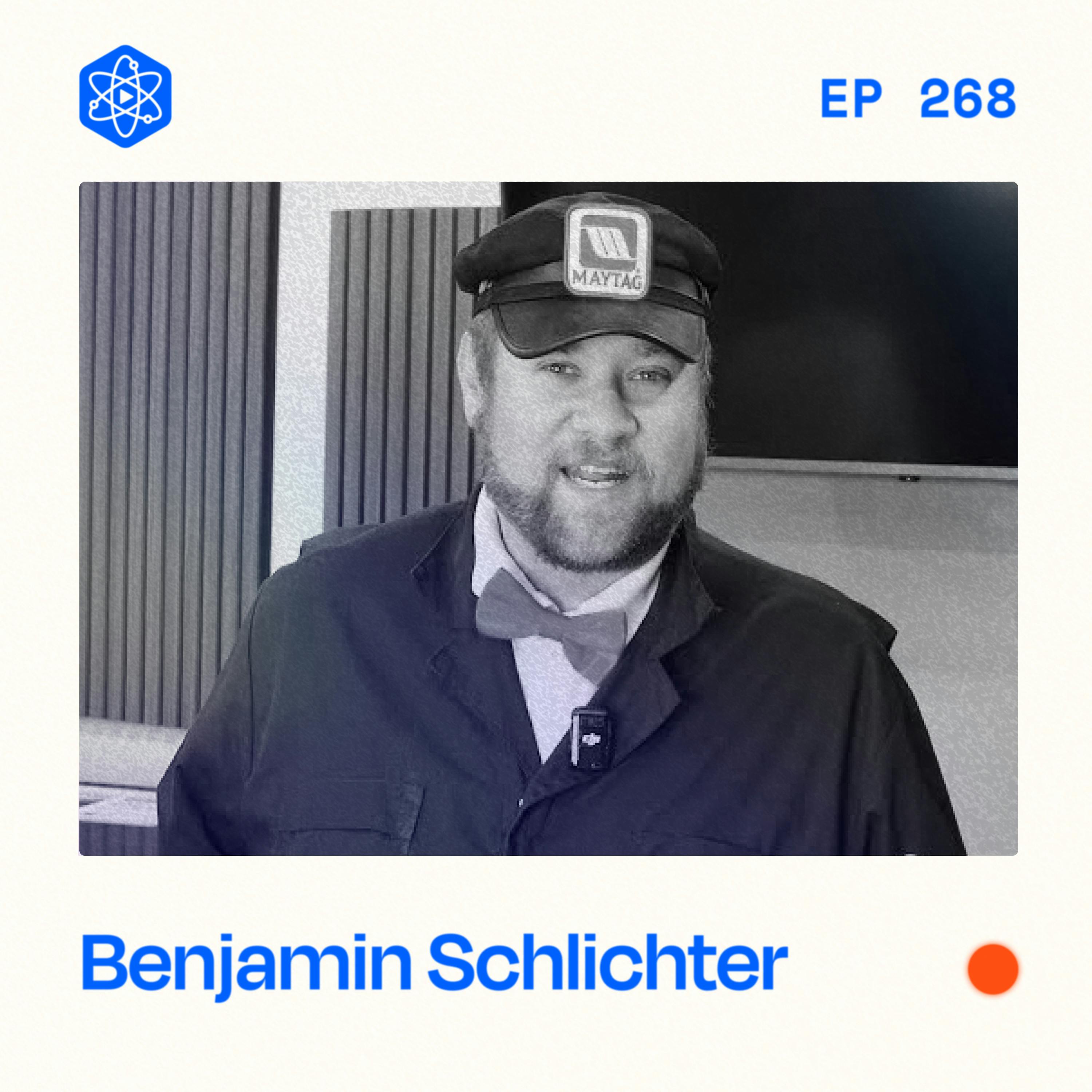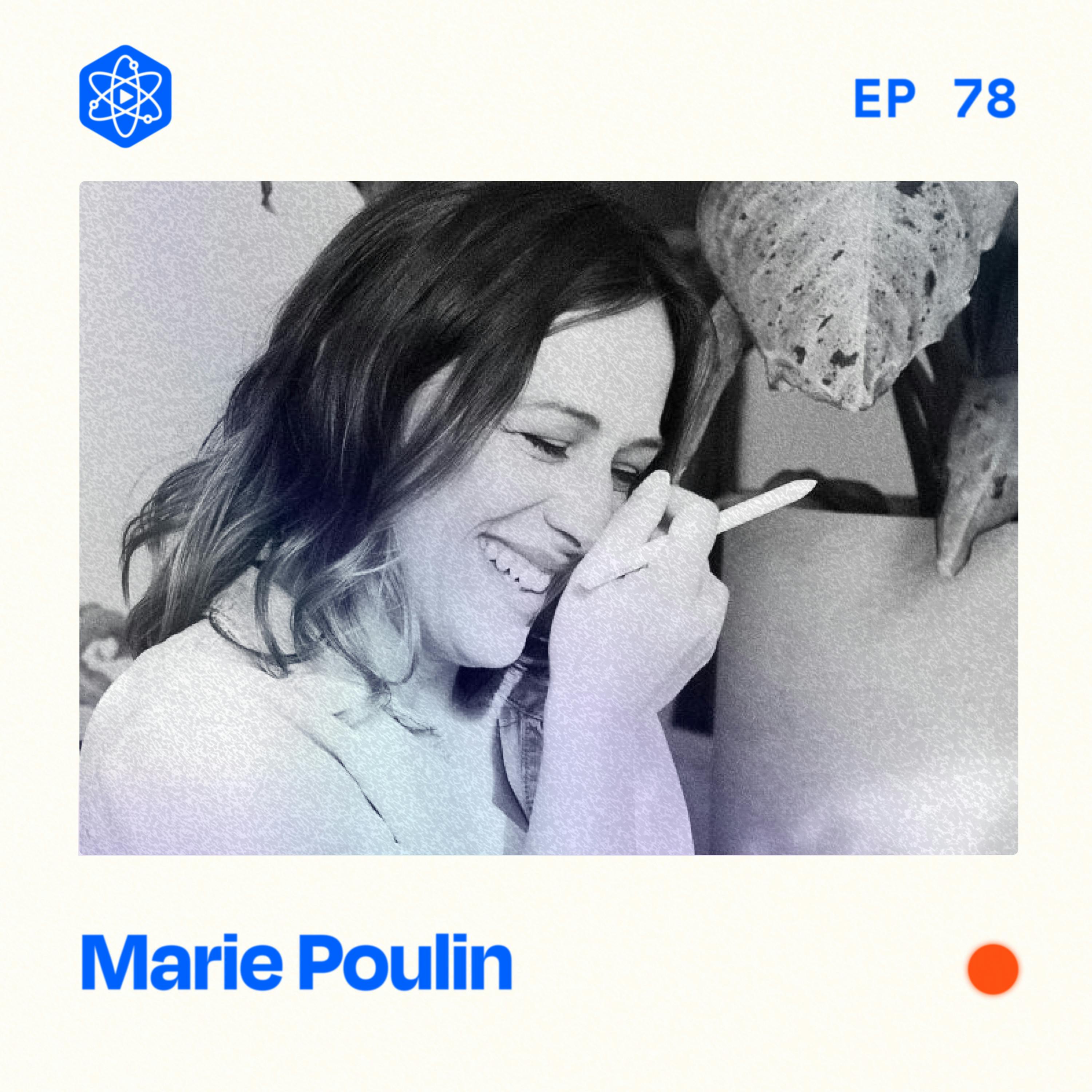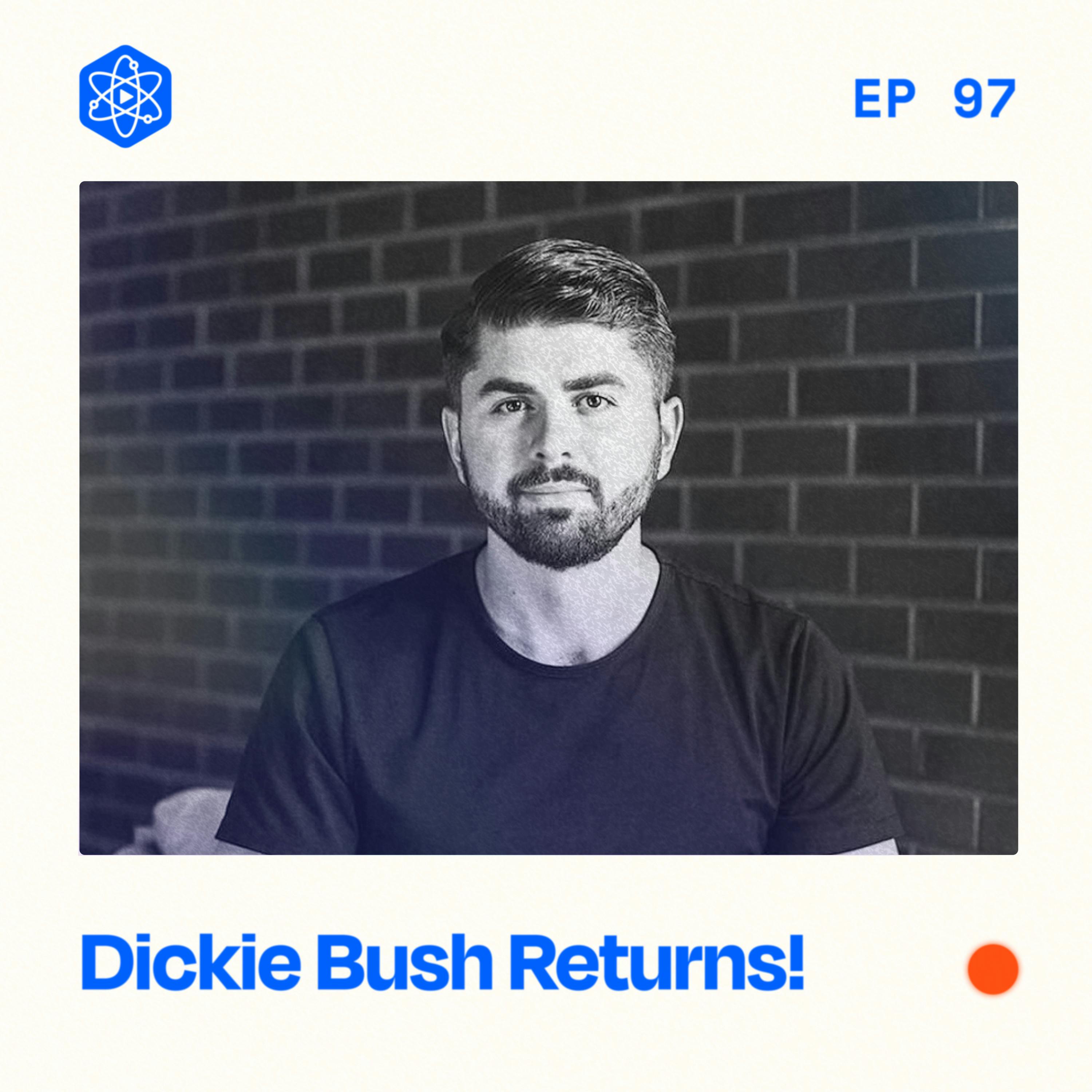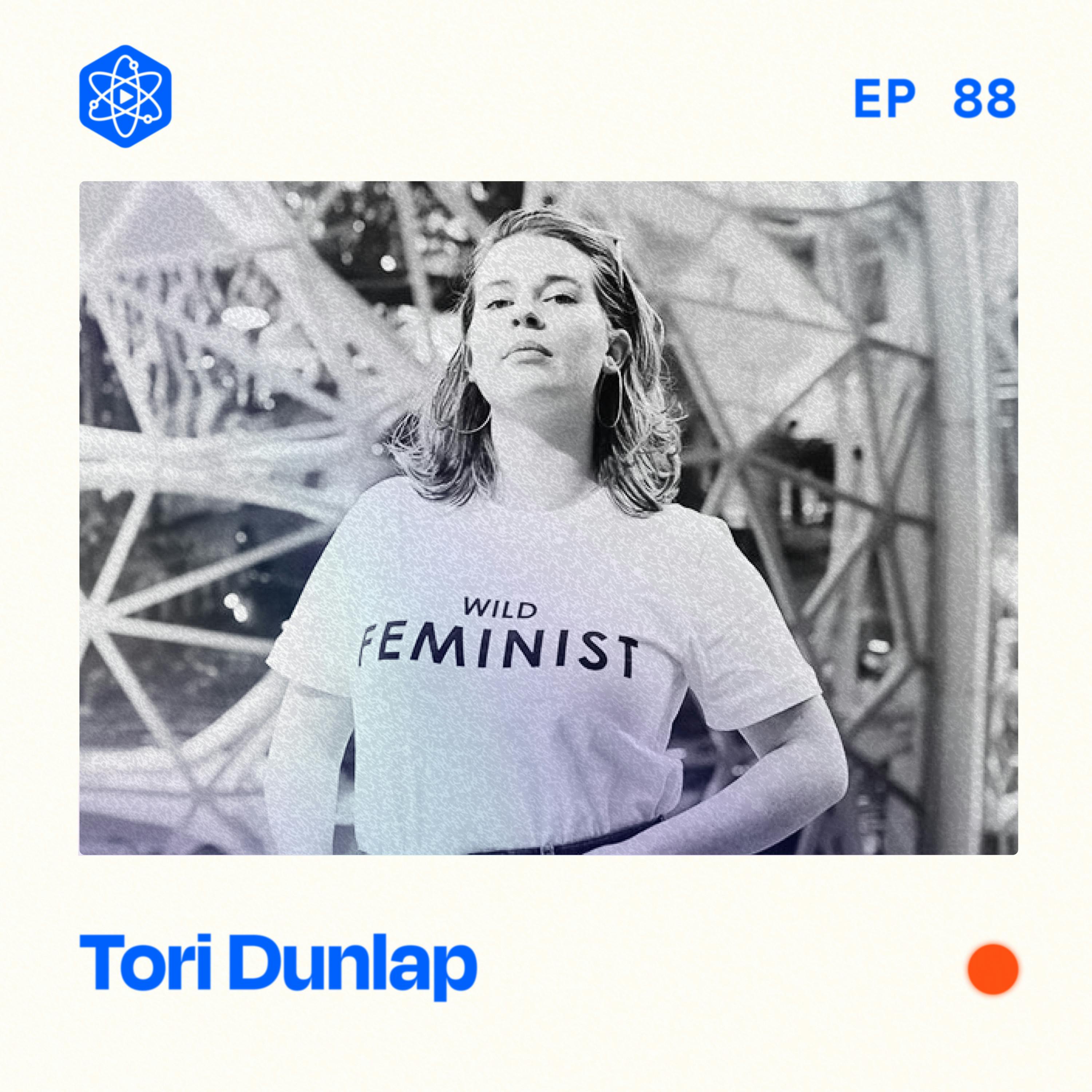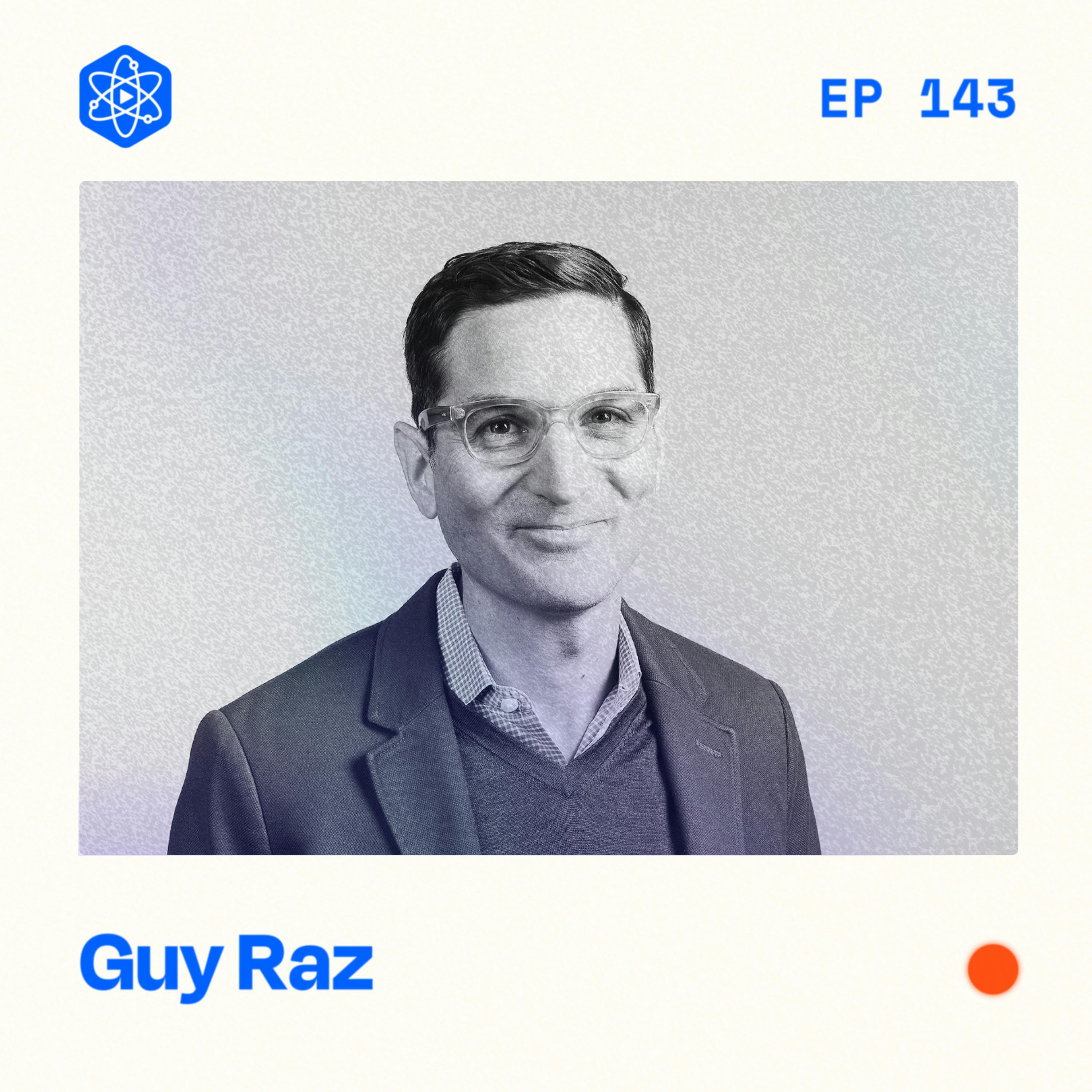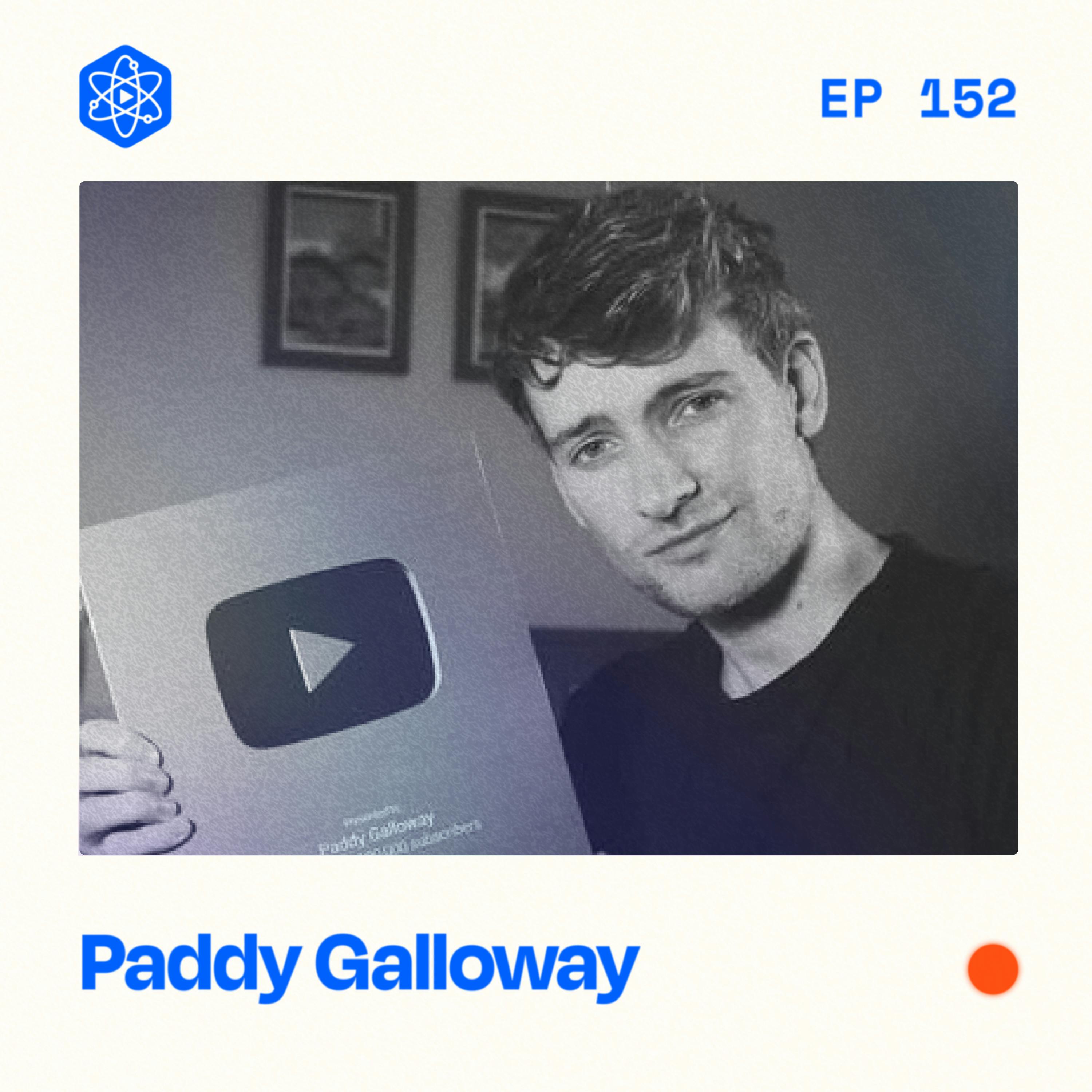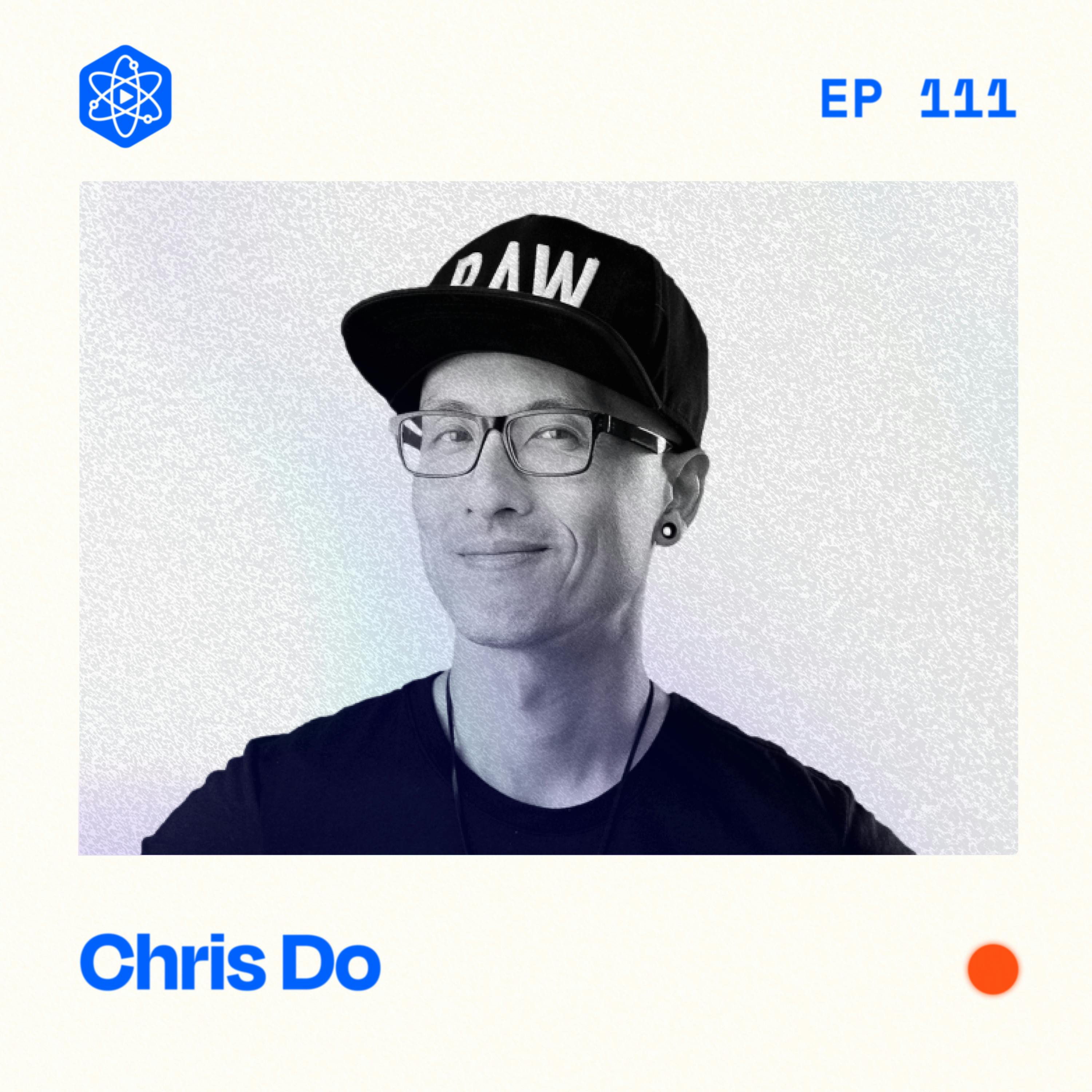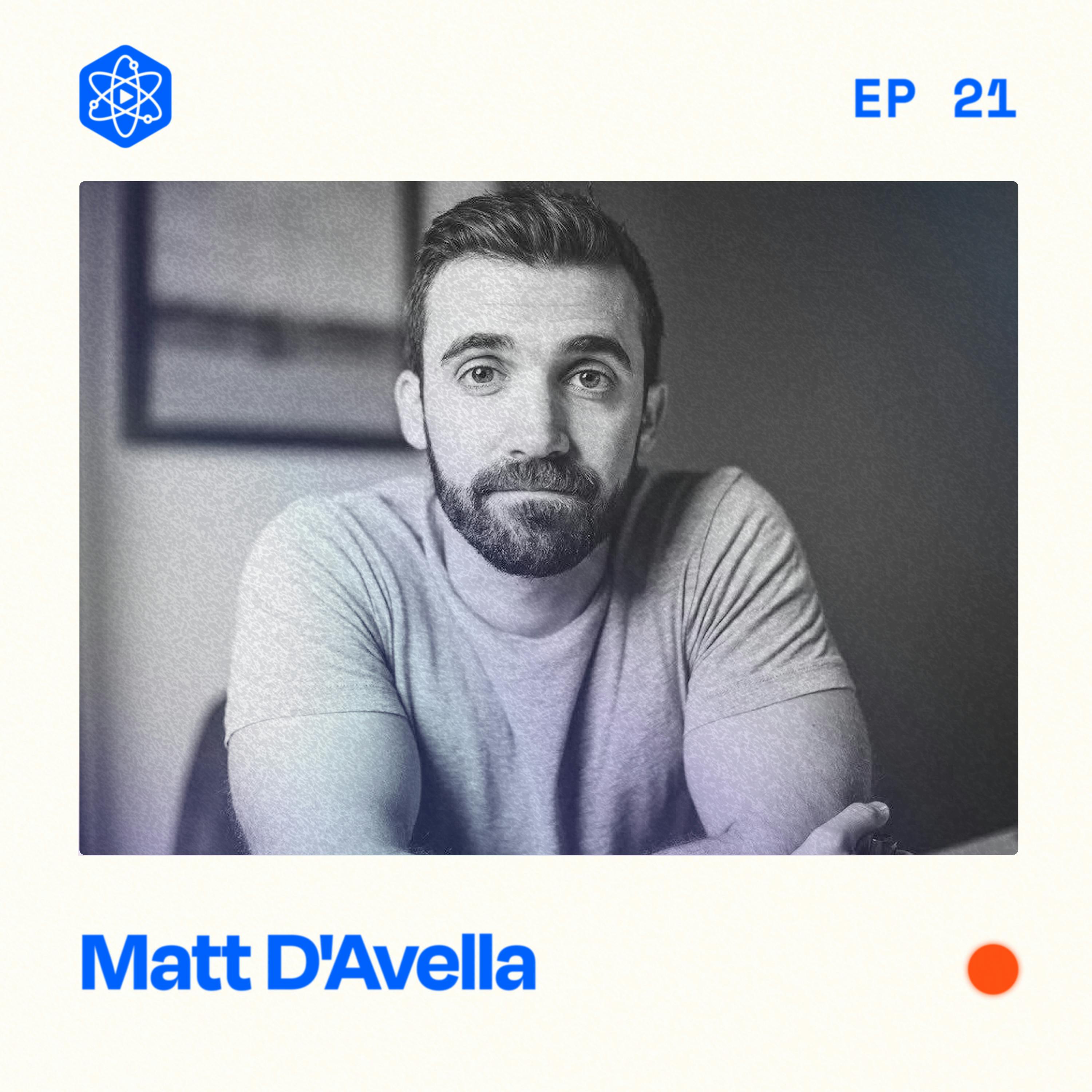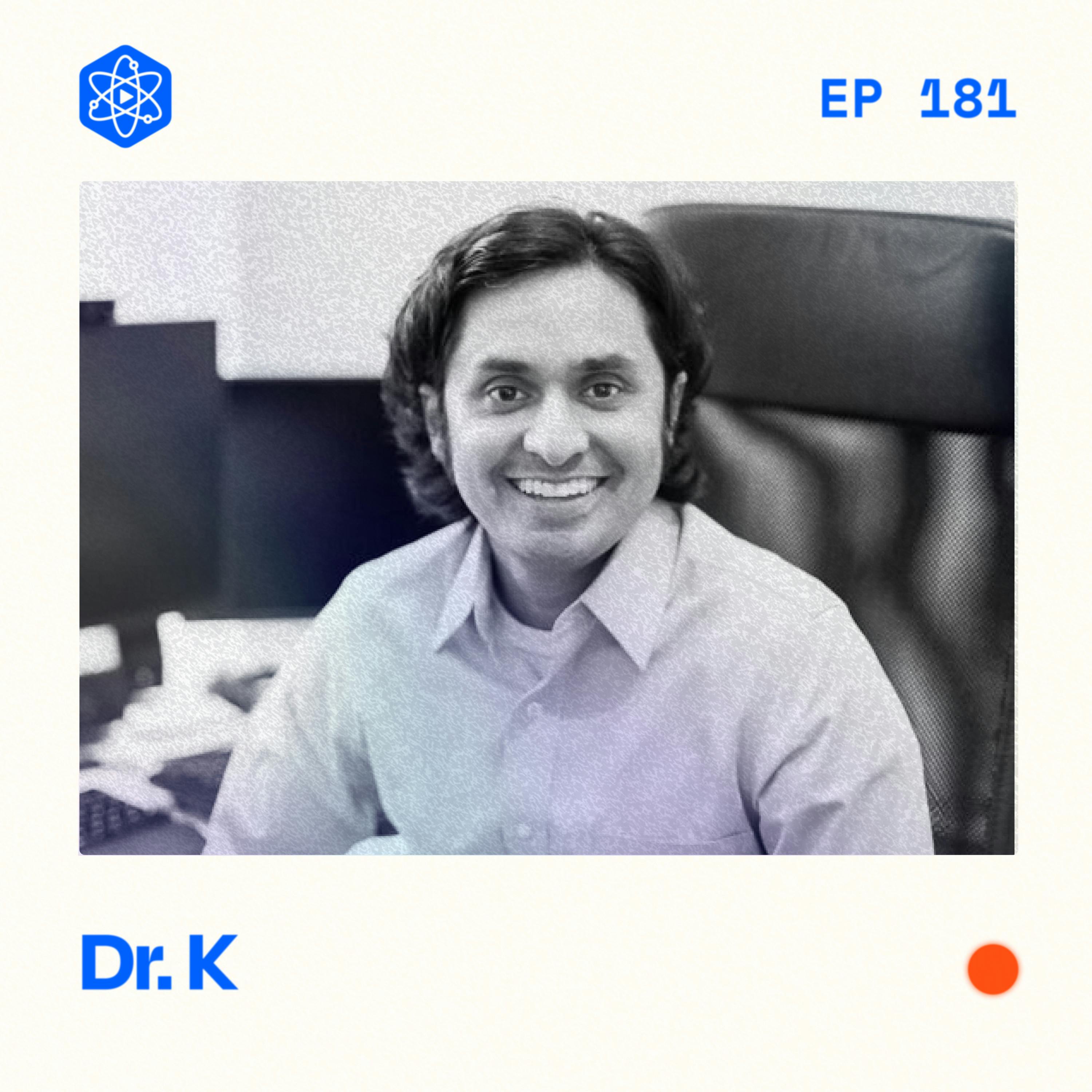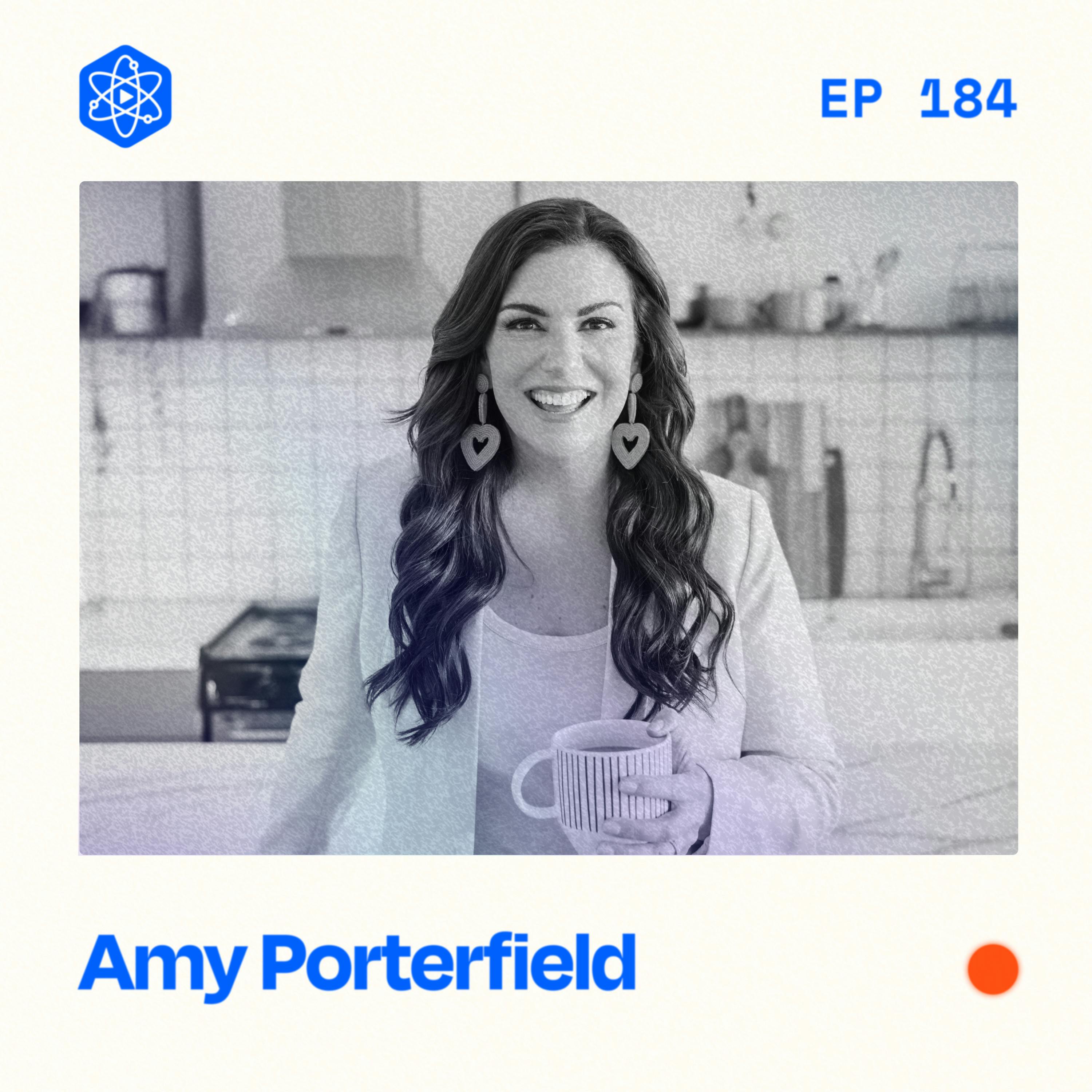Ben Schlichter is the creator of Ben’s Appliances and Junk.
Ben Schlichter is no ordinary YouTuber. He doesn’t do challenges or video essays. He talks about appliances and makes a LOT of money doing it, but not in the way you think. In this episode, we talk about, what you’re missing out on by not using YouTube Shop, how to effectively use your videos to sell products, and when you should start making your own products.
Full transcript and show notes
Benjamin's Website / Twitter / YouTube / Instagram
***
TIMESTAMPS
(00:00) The Appliance Repairman Making Millions
(01:16) The Economics of an Appliance Channel
(04:20) The YouTube Shopping Program
(13:33) How to Use Affiliate Links to Sell
(19:33) Ideation Strategy to Sell More Effectively
(21:46) What Content Converts the Best?
(23:58) Secret to Getting People to Click Links
(27:19) SEO Oriented Packaging and Descriptions
(29:12) Creators Are the Distributors of Attention
(32:25) Traffic Source Data and Chapter Title Importance
(35:09) The Maytag Uniform
(38:05) When to Start Diversifying Your Channel
***
RECOMMENDED NEXT EPISODE
→ #179: Justin Moore – A step-by-step strategy to get anyone sponsored, regardless of audience size.
***
ASK CREATOR SCIENCE
→ Submit your question here
***
WHEN YOU'RE READY
📬 Creator Science Newsletter
🚀 Get CreatorHQ (creator operating system)
🧪 Join The Lab (private membership community)
🧞♂️ Get a Personalized Offer
***
CONNECT
📸 Connect on Instagram
📹 Subscribe on YouTube
***
SPONSORS
💼 View all sponsors and offers
***
SAY THANKS
Ben Schlichter [00:00:00]:
We're pulling in about $1.8 million a year.
Jay Clouse [00:00:03]:
What?
Ben Schlichter [00:00:03]:
I am in the top 250 YouTube shopping creators in the world.
Jay Clouse [00:00:07]:
That's Ben Schlichter, and He's no ordinary YouTuber. He doesn't do challenges or video essays. He talks about appliances and makes a lot of money doing it, but not in the way that you think.
Ben Schlichter [00:00:20]:
I would say parts, affiliates and Adsense are probably 80% of $1.8 million.
Jay Clouse [00:00:25]:
What would the last 20ish percent be?
Ben Schlichter [00:00:27]:
Brick and mortar. And then ebay.
Jay Clouse [00:00:29]:
In this episode, you'll learn some new way to monetize your channel that you've never thought about before. We talk about what you're leaving on the table by not using YouTube shop.
Ben Schlichter [00:00:38]:
The affiliate rates on YouTube shopping are amazing. Instead of getting 3% on Amazon, I may be getting 8%, 10%, 20% on very similar products.
Jay Clouse [00:00:49]:
How to effectively use your videos to sell products.
Ben Schlichter [00:00:52]:
If you can pair the call out with the product with the reason for the video, you will have the highest CPMs possible.
Jay Clouse [00:01:01]:
And when you should start building your own products.
Ben Schlichter [00:01:03]:
I started my process with products when I had 4,000 subscribers. You don't need a large audience to find a winning product. You just have to know what your audience is.
Jay Clouse [00:01:13]:
And now let's talk with Ben Schlichter. What do the economics of the business look like today?
Ben Schlichter [00:01:19]:
We're pulling in about $1.8 million a year out of our business in Circleville. So the margins on what we do are very, very healthy. Now, AdSense is robust. Part sales are robust. Affiliates are robust. I would say parts, affiliates, and Adsense are probably 80% of my 80% of $1.8 million. Somewhere around there is what I would hazard to guess. Wow.
Jay Clouse [00:01:46]:
And what would the last 20ish percent be?
Ben Schlichter [00:01:48]:
Brick and mortar. And then ebay, which is where we're going out and purchasing, because we have the infrastructure already set for shipping parts that we're manufacturing or acquiring through distributors and then selling through our YouTube store. That part isn't a huge margin, but it's nice to have extra work for the staff. So my labor expenses on that, my, my overhead is somewhat low, but I also use it to diversify.
Jay Clouse [00:02:17]:
So when you say that Today it's about 50, 50 or maybe a little bit majority YouTube versus the main appliance repair business. Are you talking in terms of time and effort? Are you talking in terms of impact on the bottom line?
Ben Schlichter [00:02:30]:
Time wise, I'd say it's 50, 50. Revenue wise, it's like 80, 20 now in favor of YouTube. I have a very significant process of using YouTube to generate income for my company. I make money multiple, multiple different ways on YouTube with the AdSense of course, but then the product sales, the affiliate sales, sponsorships, and then I'm using my influence to get business deals for my appliance business too. So, you know, how do you, how do you factor a deal where you make a relationship and network with someone entirely because you're YouTube influence that gets you a business deal to buy product for your brick and mortar store? I mean that's a hundred, That's a deal 100% of the way. I only got because of YouTube or. But it's, you know, the bottom line would show up for the physical business. I need the brick and mortar for the content, for the YouTube side of things.
Ben Schlichter [00:03:32]:
So I have to manage some of that. Not, not as effectively as it could be, but I have to manage the brick and mortar side to fund the content creation side because I'm in a niche where it's a little, it's not easy to just go out and create as much content as I want. I have to hunt a lot of physical things down to make my content, if that makes sense.
Jay Clouse [00:03:56]:
Right. You couldn't just sit here at a desk and tell me why I should buy this specific washer or dryer. It just wouldn't be as compelling as what you go out into the field and actually do in your studio.
Ben Schlichter [00:04:05]:
Yes, I mean I have done that and it's been quite effective. But I also have seen the metrics on the back end where if I locked into this format, this talking head format, it would be effective for a period of time, but eventually I think it would have diminishing returns. Whereas the hand on tends to have a much stronger long tail. In my experience. There's a huge delineation in terms of metric performance that long term tends to be in the studio where I'm getting very hands on and then talking head tends to plateau very quickly.
Jay Clouse [00:04:41]:
When did you figure out that this YouTube thing didn't have to just be content and you know, SEO, getting views on tutorials, but that you could actually monetize yourself outside of even AdSense?
Ben Schlichter [00:04:53]:
Even before I got monetized on YouTube, I was a affiliate with Amazon, so I was posting links to the products in the descriptions telling people to do this. Even had some sponsorships with some of the Amazon parts sellers. And the nice thing about that was I could see how their products were converting on my videos or at least in a general sense. So I start, I came to the Eureka moment. I see how they're converting. All I have to do is source this product and sell it myself. And I'd probably get a much higher margin than what Amazon's doing, which right now. It was 4% when I started YouTube and it's, it's consistently dropping and I was able to start that somewhat fast.
Ben Schlichter [00:05:41]:
I had a product that I was very passionate about converting people to purchase because it was a major fix in the appliance industry. So I found manufacturers for that product. So instead of going to distributor, I started just manufacturing the product myself and selling it on my YouTube channel. I started selling that product in 2021 and it's still within like my top three products four years later and still does very well. And the margins are super healthy. And I've been able to use that to establish all the other parts of my e commerce business.
Jay Clouse [00:06:15]:
In your videos below them you have products in your store. And I see this on some channels, but not that many channels. It seems like something that not a lot of people are really tapped into and a lot of channels that are tapped into it. It's basic branded merch. You know, it's like you like our channel, here's our T shirt with our stuff on it, here's our hat and our coffee mug. Very different approach that you're taking and I'd love to just hear how that works, how you stumbled upon it and how someone else should be thinking about the store features inside of YouTube.
Ben Schlichter [00:06:47]:
What I would say about that is. And the auto focus is gonna be horrible, but there's a, oh, is it gonna focus? But there's a nice little YouTube plaque in the background for YouTube shopping. And I was given that by YouTube because I was a beta tester for their entire program. I was paid by YouTube to introduce that feature on my channel because I had migrated from that weird square sub domain to Shopify, where I'm at currently and YouTube partnered with Shopify to be able to allow the YouTube shopping and API to interact with each other to where I. So I have my own products listed on YouTube Shopping. I also use YouTube Shopping to run affiliates for other companies on the products that I cannot source myself, that I cannot distribute myself. And that is something that any creator that is monetized in YouTube. I think even now in the United States, if you have the very first layer just before full AdSense monetization, which is the 500 subscriber and 3,000 watch hour requirement or it's a little bit higher than that what that does is it allows you to add affiliates to your videos directly natively to the YouTube app.
Ben Schlichter [00:08:14]:
It's in line with like Google Shopping and it's a very powerful new tool. I would suggest every creator use as much as possible. It's very lucrative for creators. I not only did I beta test that program for them, I am in their Shop Star program which means I am in the top 250 YouTube shopping creators in the world. Like we talked about early on how I started with Amazon, but their rates are not very good. YouTube is kind of creating this, I would call it. Even though they say they'll work with Amazon, I feel like it's an island of not almost like an island of misfit toys that are not. Is not related to Amazon, but it's like everyone else.
Ben Schlichter [00:09:01]:
And the huge advantage with YouTube Shopping is one, the conversion rates are amazing. But two, there's a lot of companies that are in the YouTube Shopping network that you can pitch products to with that enhanced conversion rate. But the affiliate rates are just really, really good. The affiliate rates on YouTube shopping are amazing. In my opinion. Instead of getting 3% on Amazon, I may be getting 8%, 10%, 20% on very similar products that are at similar prices because they're not having to deal with the overhead that is encompassing the system of Amazon fba. And I don't know if you've had any creators that do Amazon FBA on but that is very expensive and very low margin. Whereas self fulfillment, like what I do is much higher margin but you still need your influence to get those products marketed and sold.
Ben Schlichter [00:10:00]:
And that's where YouTube shopping comes in as a just a very amazing experience. I think I can't say enough good things about the YouTube shopping system in that I, I mean I would be willing to go on record and say as it is right now, as a creator, I'm earning as much money from AdSense as I am my affiliates through YouTube shopping now and I do very well on AdSense.
Jay Clouse [00:10:25]:
I'm guessing your direct sales and fulfillment is higher than the affiliate revenue.
Ben Schlichter [00:10:32]:
Yes, in terms of the actual profitability for my company, yes. I would say though that I am generating more income through my affiliates for other companies than I am my own store.
Jay Clouse [00:10:45]:
Well, because you're selling affiliates for like huge appliances, stuff that you wouldn't want to sell and ship. These are like many hundred dollars if not multi thousand dollar products. So an 8 to 20% commission on these things is pretty serious money.
Ben Schlichter [00:11:01]:
Yes, I work with Lowe's, Home Depot, Best Buy and Then have direct affiliates with Samsung and lg, among others. And again, those commission rates are anywhere from 5 to 30%.
Jay Clouse [00:11:14]:
And when you say that the conversion rates on YouTube affiliates are really high, what's the baseline for that? What does really good mean in conversion rates?
Ben Schlichter [00:11:24]:
It's nebulous. I hate to say that it's nebulous in that I don't get conversion rate data for YouTube shopping yet on the front end as a creator, but what I can tell you is I was using affiliates through the links in the description and the comment feed for certain companies, telling people to use them. And then YouTube shopping comes out, and they finally get the partnerships with these larger companies that I had been trying to work with previously. And then I add it to YouTube shopping, and all of a sudden I see my conversion rates or sales rates double or triple. Hmm. So it's been quite lucrative in terms of those conversions.
Jay Clouse [00:12:11]:
After a quick break, Ben will share his YouTube shopping secrets. And now let's talk with Ben Schlichter. And do you have any idea whether that the click is more often people clicking the product link in the description or the overlays on the video? Like, how contextual does it need to be? Is kind of what I'm thinking. Because some people watching this, they'll have, like. They'll have a typical description where they'll have links to, like, 10 products on Amazon that weren't specifically mentioned in the video, but they just know people in their audience like those products. If I add those products to YouTube Shopping and I don't explicitly call that product out in the video, do you think I'm still gonna get sales from putting that in YouTube shopping versus just the description?
Ben Schlichter [00:12:55]:
Yes, my brother, I finally convinced him to start doing that on his Investment Joy channel, on his shorts, where he's getting, you know, 10 million views, various videos, and he started finally calling, calling it out slightly, but it's. A lot of it is unrelated. And the advantage you have with a lot of that is cookie capture, where, yes, they may be clicking on one item, but you're getting that tracking pixel, that cookie, for their cart within the next 48 hours. So then all of a sudden, you're seeing these huge shopping carts of Lord knows what get converted and credited to you. So it does become a rather effective means of additional revenue for your channel. I'm far more focused on it where I'm calling out anything in the video to try to convert on it, because my videos are very focused on those specific pieces. But then people like my brother aren't and their conversion rates are relative to the, relative to their CPM for the short is doing quite well. They may make 10 to 30% of the shorts CPM and additional revenue through the affiliates.
Ben Schlichter [00:14:09]:
Whereas again in my situation, my affiliates are starting to get closer to 100% of my AdSense revenue because I mean ultimately that's really what your AdSense revenue is trying to do is to sell the advertising space to get people to convert and you're earning 55% of that income with the affiliates. I'd say the theory is it's a higher margin because you're trying to really attract more interest through SEO and through whatever your content is actually targeting. But Even after my 5 to 10% cut of the affiliates, I'm still finding the CPMs to be very close to the long form AdSense revenue that I'm getting on my channel, which I'm talking between 6 and $10 RPM or CPM.
Jay Clouse [00:14:59]:
Yeah, I'm wondering like if I just, if I just took a week and said we're going to go back to the back catalog of the videos that are performing best and we're going to set in place YouTube affiliates for just some of the gear we use to make these videos. Our cameras, our, our lenses, our audio equipment, our lighting. We're just going to put that in the description via YouTube affiliates. Do you think that would result in a meaningful revenue stream?
Ben Schlichter [00:15:24]:
I think you would get something off of it, but it would really take you mentioning it in a small blurb. Something more of interest in the video. In the video? Yeah, like your microphone, your Tumblr, whatever I'm physically seeing. You know what if, you know, someone wants your lockers in the background, if you started mentioning that or just something that was in the video, even if you weren't calling it out, you would probably see more sales, I think because if someone said, oh Jay sounds really good on that microphone. What microphone is that? Maybe you wouldn't have to call it out in the video per se, but they, there's still an interest in it. If you're tagging something that is very irrelevant in your video, the conversion rates are going to be very poor. But if you have at least something where there's any sort of interest, whether it's called out or, or at least there's some sort of subtext, you will convert I think reasonably well. But the more you call it out, the more focused your content is on it, the higher rate you're going to see on your conversions significantly, do you.
Jay Clouse [00:16:30]:
Think there's Any cost to doing that? Like if we did just say like we're going to take the laziest approach in the world and just tag some of our gear in all of our back catalog videos, do you think that would have some sort of opportunity cost to some other mechanism of monetization?
Ben Schlichter [00:16:46]:
No.
Jay Clouse [00:16:47]:
Pretty compelling pitch.
Ben Schlichter [00:16:50]:
Ultimately, I would say it comes down to what your payroll would look like to do that. I think that, I think it would make sense if you were, you know, invoicing someone at $15 an hour to do that for you for your back catalog. I think it would definitely be worth it again, especially if you're seeing your high performing videos that are getting reasonable numbers of views still currently. I definitely think that would work because I did that myself. I did that in hindsight for videos where I realized that I could do more tagging and it worked. But recently I refilmed those same videos, calling out the products more thoughtfully with YouTube shopping or direct affiliate links in the Description. And I'm 5x10xing my conversion rates. So if you do a little bit of work in the videos, the impact is far, far greater than maybe back catalog editing.
Ben Schlichter [00:17:56]:
I'm not, again, I'm not saying it isn't worth it, it's just, it's orders of magnitude better. But you know, any sort of addition to it would be useful. And again, you get the capture of the cookie that if they do meaninglessly click on it, you may not get that conversion on the product, but you may get it on something else because they were going to go shop@walmart.com anyway. And I've seen that to be effective to where you can see some income come in.
Jay Clouse [00:18:21]:
I want to talk about how this new revenue stream impacts your ideation process for the channel. How do you decide what videos you make and how much of that is driven by this strategy of selling your own products or selling certain high converting high margin affiliate products.
Ben Schlichter [00:18:39]:
It's a cyclical process for me. I probably don't have it locked down as optimally as I would like. And I say that because I'm trying to find the right mix of content that will bring people into my channel that will look authentic, that is authentic to my audience, that I'm not trying to pitch anything with while creating a reasonable amount of content to fund what I do. That has looked differently over the years that I've run the channel because some one year or two years I focused exclusively or very intently on products and it worked great. And, and I should do a lot more products in the future. But then I had so much demand for larger, more expensive products that I had to affiliate that I've, you know, if you look on my channel, I've done a lot more reviews on specific products lately that are ones that are products that I not that I can't fulfill. And the affiliate income on that's been quite good. Excellent even.
Ben Schlichter [00:19:49]:
I'm up 400% from the same time last year on affiliates, which is been an effective pitch for my business. Is it absolutely optimal in terms of my content creation mix? Probably not, but it's some of that for me is the discovery process too. And the advantage that I have with some of the affiliates is I've gone back to the drawing board, so to speak. And I'm asking myself the question of what can we manufacture, what can we partner with that's beyond our current level of affiliates? And I'm finding those opportunities because of the views that I'm getting to be able to find more opportunities because of the reviews for affiliates for products that are in the YouTube shopping that I'm not directly fulfilling.
Jay Clouse [00:20:33]:
What type of content have you seen convert the best to sales from YouTube Shopping?
Ben Schlichter [00:20:38]:
The one that is the most authentic, that reaches the most people. And I know that may be a sidestep on your question, but what I would say is the CPMs are identical between an affiliate of a review and selling my own products. The value is probably close to $100 to 1 to $300 per thousand views in terms of gross revenue. Now whether that's the affiliate or whether that's mine, that's roughly the numbers that I see on a lot of content. The question then or the challenge is which piece of content generates more views one from the other. And then that's where you get into the issues of supply and demand. Is there an audience for this video? Is there an audience for this answer? That's where my discovery process is, is trying to figure out where the viewers are that I can meet with the content. So there are certain repair videos that I know answer a need that is under tapped in my market.
Ben Schlichter [00:21:51]:
So I make the video, I try to do as much research as I can. And then when it comes to the affiliates, is there not a review for this product? Is it a popular brand? Is it a popular product? Is it up and coming? Am I seeing comments in my feed about this product that I could review or am I seeing comments on repairs that I've done that there's a new problem popping up and trying to figure out if that's going to be the most effective use of my time in the content creation process. And that's something that I revise, revisit and revise every single day as best as I can. I think I'm pretty decent at it at this point in the content creation process, but I need to optimize it better for having more staff and hopefully expanding it beyond where we are currently at with the channel making, you know, or that my business making nearly $2 million a year.
Jay Clouse [00:22:46]:
When you give a blurb because it sounds like when you know you want to tag a product in a video it makes more sense to do some sort of quick call out to the product and the fact that it's in the. In the description, what does that look like? How do you think about what is going to be an effective call out of a product?
Ben Schlichter [00:23:04]:
The most effective is making it relevant to the video. If they're watching the video and they have an interest in the product, the conversion rate, even if you don't mention it's going to be good. If you can pair the call out with the product with the reason for the video, you will have the highest CPMs possible. Just like asking people maybe for a subscription. I am from the theory that you have to deliver value first. I want to deliver as much value as I can in the video so they trust me and they trust my process. And then my thought is if they trust me, they trust my process. They'll trust whoever I'm pitching that will sell the product, whether that's me fulfilling it or.
Ben Schlichter [00:23:53]:
Or whether that's Lowe's or Amazon or Samsung or whatever it is. So I try to deliver value first. Sometimes I will pitch it first and then deliver value secondly because I think I'll have the retention numbers but I've always found that calling it out matters. But ultimately it's up to your audience that's interested in the video first.
Jay Clouse [00:24:16]:
Does AdSense compete with the strategy? Like when you are putting a video up and thinking about where you place your YouTube midroll ads, do you have some way of thinking about that? Where you don't want it to compete with callouts in the videos to products or there are too many mid roll ads you could place. What's the interplay here?
Ben Schlichter [00:24:34]:
I haven't seen it affect any video. I thought it would affect it. I've heard from other creators that when you pitch your own products in certain spaces it does harm your AdSense revenue. I will say though from my experience in this it hasn't. Maybe it's because I'm focused so hard on physical products. It's different, but I can look at my CPM numbers and my highest CPMs, my highest RPMs, my highest numbers are ones where I'm still calling the products out. There's no differentiation on it, which is something that I'm personally surprised at as a creator that I expected that to happen. But whether I'm calling the product out or not, my my RPMs have been pretty stable.
Ben Schlichter [00:25:26]:
But where I've noticed when I am doing a review on a product or a suite of products in a comparison, the AdSense revenue is higher. And arguably my affiliates are pretty good too, because instead of being laser focused on one product where I may get more money on the product sales of things, the RPMs are still good. But then if I'm giving people an opportunity for a lot of comparisons, it seems like AdSense kind of swoops in and says, oh, these people are engaged in this kind of product. We need to throw a ton of ads at them. Even if even though I'm peppering them with my own affiliates, it seems like it doesn't care.
Jay Clouse [00:26:07]:
After one last break, Ben shares his approach to titles and descriptions and to capture more traffic from search. And now let's talk with Ben Schlichter. With YouTube search and Google search being such a driver of traffic, how much do you think about titles and descriptions? It's everything.
Ben Schlichter [00:26:26]:
My process is I try to come up with an idea for a video. I will run it through SEO like SEMrush.com to try to look at what keywords have high value, low competition to try to formulate my title. I want to know not only what the keyword needs to be, but is it even a good idea in the first place to create that video? So that's the first part of my process. Then for the descriptions, I try to deliver value in the descriptions. I use one or two paragraphs to properly explain what the video is about. Does that help or not? I don't know. But again, I want to deliver value. And then I will start in with my links to the products.
Ben Schlichter [00:27:16]:
So even though I'm using YouTube Shopping and we've talked so much about YouTube Shopping, I'm still putting links to the products, regardless if it's mine or an affiliate's in the description and in the pinned comments. It's all extra money. It's helped me build relationships with these companies and, and it helps me if I'm using like Bitly links. It helps me track where people are clicking and where the value is getting derived from the lack of sophistication in YouTube viewers mean that the more information I give them or the more links I give them, the better the conversion is. Very often I'll have a link towards the product and the comment feed will be where's the link? Even though I have maybe three or four or five links to that one specific product or I don't know how, you couldn't fit, you couldn't click it. They still ask, and I get that question from other creators a lot. And my statement would be the more the better. I mean, even almost to the point of obnoxiousness, Is there a chance of.
Jay Clouse [00:28:12]:
Having too many unique products listed per video?
Ben Schlichter [00:28:15]:
No, I intentionally made a video that was a review for washing machines. I'm going to tell you how many links I have in the description and also how many it would mirror on the YouTube shopping system. I'm gonna guess about 40 links in this video to different products from multiple affiliates. They're not my own products. So I have 40 links in the affiliates. YouTube Shopping only captured about 15 of them. And that is one thing I will say negatively about YouTube shopping is if you're looking for affiliates, they're still trying to gather more affiliates to their system. And there are certain things about their API that is not perfect.
Ben Schlichter [00:29:00]:
The biggest struggle I have is if a product is out of stock, it may stop displaying in the carousel because it's out of stock. And sometimes I've noticed that it will drop off permanently. So sometimes I've had to babysit links, whereas a hard copied link in the description is static and stays there forever. But I haven't tried to look at UTMs to aggregate how much money I've made off of it. But I can easily tell you it's my highest performing affiliate video I've ever had. And by a very wide margin, affiliates are the absolute safest way you can make money as a creator. But the next order of magnitude is distributors and self fulfillment. And then the ultimate goal, if you have that entrepreneurial mindset as a creator, is to manufacture or find the manufacturer and compile whatever it is, because those are where the highest margins are as a creator.
Ben Schlichter [00:29:54]:
Because I mean, if you really think about it as a creator, we sell our ads to companies because those ads make them a profit. So they're capturing a lot of the return on. They have to capture the return on ad spend to make it work. So that's what they do to us as creators. So then the question is, what can we do as creators ourselves where we can hopefully Encompass all of that margin where it makes sense, like maybe a creator course or creator labs, different things like that, to where you're owning that entire process. That should be the ultimate goal of any creator, is to own the entire process or at least own as much of it as possible. Yes, it's more work, but ultimately when you own that process, I think it's very effective. And it's also more authentic because you're not going out there and you're selling someone else's stuff.
Ben Schlichter [00:30:52]:
Not everything can be done that way. But I'm never going to manufacture my own appliance, but I can manufacture the part.
Jay Clouse [00:30:59]:
Well, to your point or to your example, two brands creators are the distributors of attention. Brands could go direct to that source, which is kind of like their equivalent of going directly to the manufacturers. But it's harder to collect this attention yourself. So they go to us as distributors of attention and they still make a margin on it, but it's a lower margin than if they had their own means of distribution. What is the typical traffic source for your channel? You mentioned in the beginning it was like SEO. Is that still the dominant source for you today?
Ben Schlichter [00:31:32]:
So for 90 days, here's my channel's numbers and again, I'm 95% long form content based, 32.1% of my views come from external sources. That's going to be 90% Google search. My second highest form of viewership is YouTube search and that's 27.2%. Third is going to be suggested videos at 16.3% and then browse features which is. This is opposite of everyone else on YouTube of course is 15.5%.
Jay Clouse [00:32:08]:
What about Chapter titles? With SEO being such and search just being such a large part of this, do chapter titles matter?
Ben Schlichter [00:32:14]:
I think they do. I think when you look at my video on Google search, it comes up with the chapter titles and it seems like it's free real estate. I will not tell you that I do it every single time I try to do it. When I think I have a video that's going to be a high converting video. But if you look at the retention curves at any of my videos when I timestamp, you'll see peaks on every single point that seemingly re engage people. Is it helping me convert on Google Search more? I don't know. I haven't done an A B analysis of videos with and without timestamps. I just, I've tried to get myself in the habit of it.
Ben Schlichter [00:32:56]:
I think it's been useful. But I would also venture to say it's only useful maybe in certain cases where I know people are going to want to get to a certain point in the video for a certain key piece of information. So instead of them fishing around in the video for it, or maybe my fear would be disengaging from the video that I give them that value alphabetically. I feel that that's why it's useful for me. I've heard people say on Google Search that they give you more real estate when you stamp that. I think there's some credence to it because it looks like AI is starting to permeate through Google Search to where they're automatically chaptering content without your. Well, with your consent because you signed off on it somewhere a year ago. But my experience with Google is if they push that feature with AI in some way, they found that the conversion makes sense.
Ben Schlichter [00:33:51]:
And if it makes sense, then it probably would behoove you to do it if you have the time and bandwidth to do it. I think there are far more important things to do as a creator, but if you have the time to do it and you get in the habit like I mostly have, I think it is useful.
Jay Clouse [00:34:08]:
How much do you think the Maytag uniform lends to the trust or, you know, just the general uniform you have on your channel? How much do you think that lends to credibility, video to video?
Ben Schlichter [00:34:23]:
More than I want it to be. May 29, 2022 is the first day that I put the uniform on because I just thought it'd be. I thought it'd be funny. I thought it would be a retention mechanic. And it was because that was the. That was the fastest growing video I had at that time. I think I got a million views on that video within 30 days. And I wasn't.
Ben Schlichter [00:34:42]:
It was just. It was a comparison of products because I had way too many people ask me what they should buy. So I thought, I'm going to make this video, I'll do this hokey thing because maybe it'll help me get retention beyond the first 30 seconds I do it. The video does very, very well. And then I think, oh, okay, this worked great, thanks. And then I go to the next video, which is back to just making repair videos. And then I start getting the audience kind of screaming at me for the. Screaming at me for bringing back the uniform.
Ben Schlichter [00:35:18]:
And from then on, I was branded, whether I wanted to or not, as the Maytag guy. So it's a retention mechanic, but at this point, there's a little bit of audience capture there too. And whether or not that's a good thing. I don't know.
Jay Clouse [00:35:34]:
What if you just made like a Ben's Appliances uniform that wasn't specific to Maytag or any brand?
Ben Schlichter [00:35:42]:
That's what I'm slowly trying to transition to. I say slowly because it requires more intention than I usually have. I mean, that's why I'm kind of wearing this black buttoned up shirt is eventually I want to go towards something that's easier to put on and take off. Just because the logistics of putting overalls on for every video gets a little bit tiresome when you have to do essentially a costume change. Once I get that uniform figured out, I already have a company that will fabricate the uniform for me. So once I get that uniform, I will want to make sure that it's on the YouTube shopping.
Jay Clouse [00:36:23]:
I love that.
Ben Schlichter [00:36:24]:
But there's a different side to that. It's less businessy than you think. Because I fund an orphanage in Kenya, I'm funding their business development center for tailors and seamstresses.
Jay Clouse [00:36:44]:
That's awesome.
Ben Schlichter [00:36:45]:
And my plan is that that Maytag uniform that eventually or the Ben's Appliances uniform is entirely sourced out of that orphanage in Kenya. So I can onshore the product to the United States and use those funds to go back to them and, you know, help them out. So that's kind of where I want that to go.
Jay Clouse [00:37:05]:
Is there a certain type of creator that you think is a really good fit for this or a certain type of creator that you think is not a good fit for this?
Ben Schlichter [00:37:12]:
I think the creator that this is. This conversation we've had has value, is the kind of creator that is focused within a niche where they have a strong core understanding of who their audience is. If you have YouTube and you're at any sort of, I guess I'd say high level, you do get some certain features, like with Brand Connect that let you get a media kit to know kind of like who your audience is. And if you. If it shows that you have an audience that has reasonably high value or you have an audience that seems to be engaged with your channel, then I think it makes sense to try to try to figure out what products or services they could be interested in and then try to figure out if there's a way that you can solve that question or solve that problem or solve that purchase for them. It doesn't make sense for channels that have too wide of a focus. But even then I would circle back and say that I could be wrong about that analysis because Mr. Beast sells something, but it's the widest product imaginable, which is candy bars.
Ben Schlichter [00:38:32]:
In one way, that sounds hokey, but in another way, it's specifically the one product he could sell that makes sense to his audience because he has no core audience. I started my process with products when I had 4,000 subscribers, and my conversion rate for that product I've had for four years was great four years ago when I had almost no subscribers. So you don't need a large audience to find a winning product. You just have to know what your audience is.
